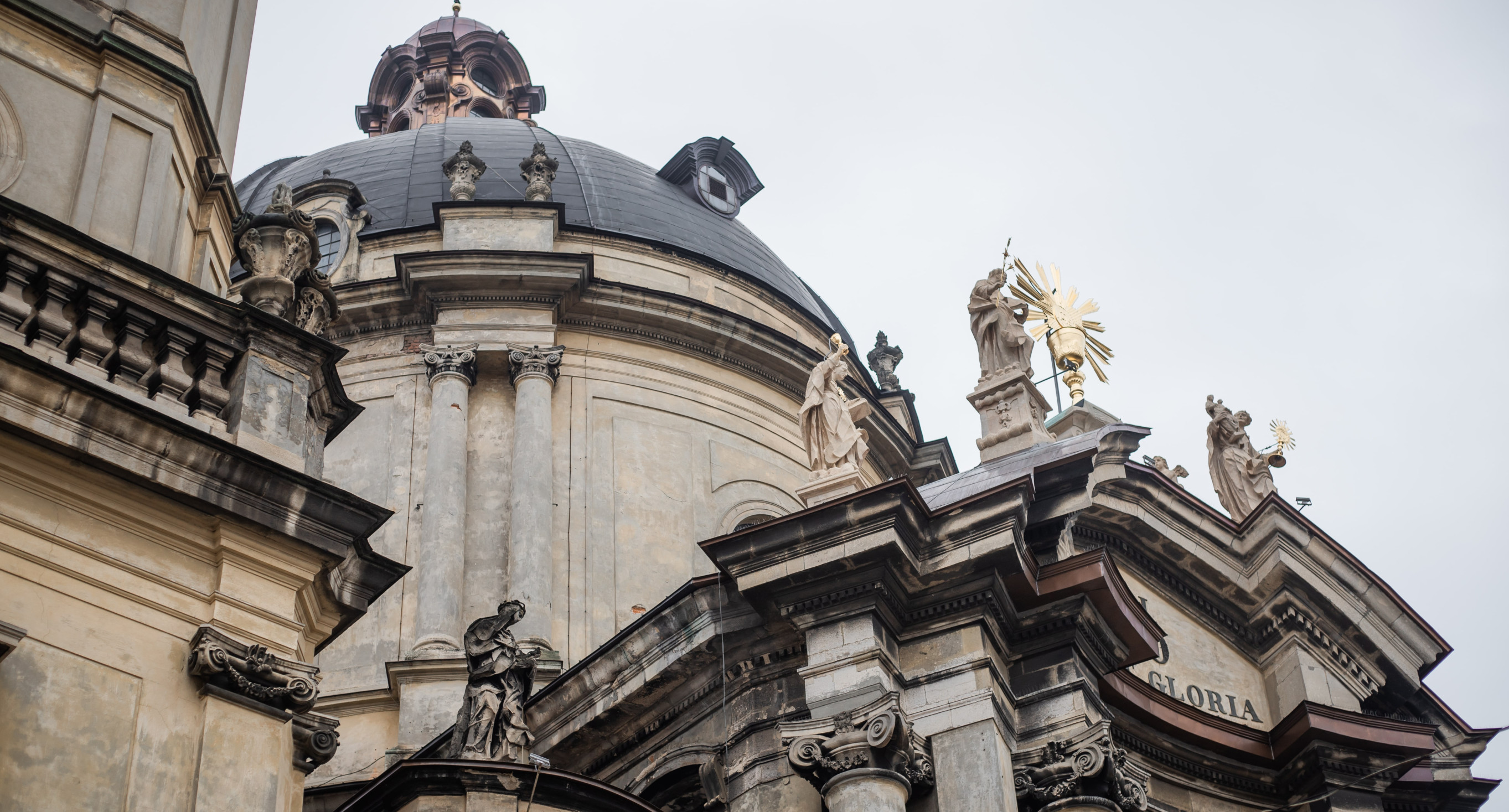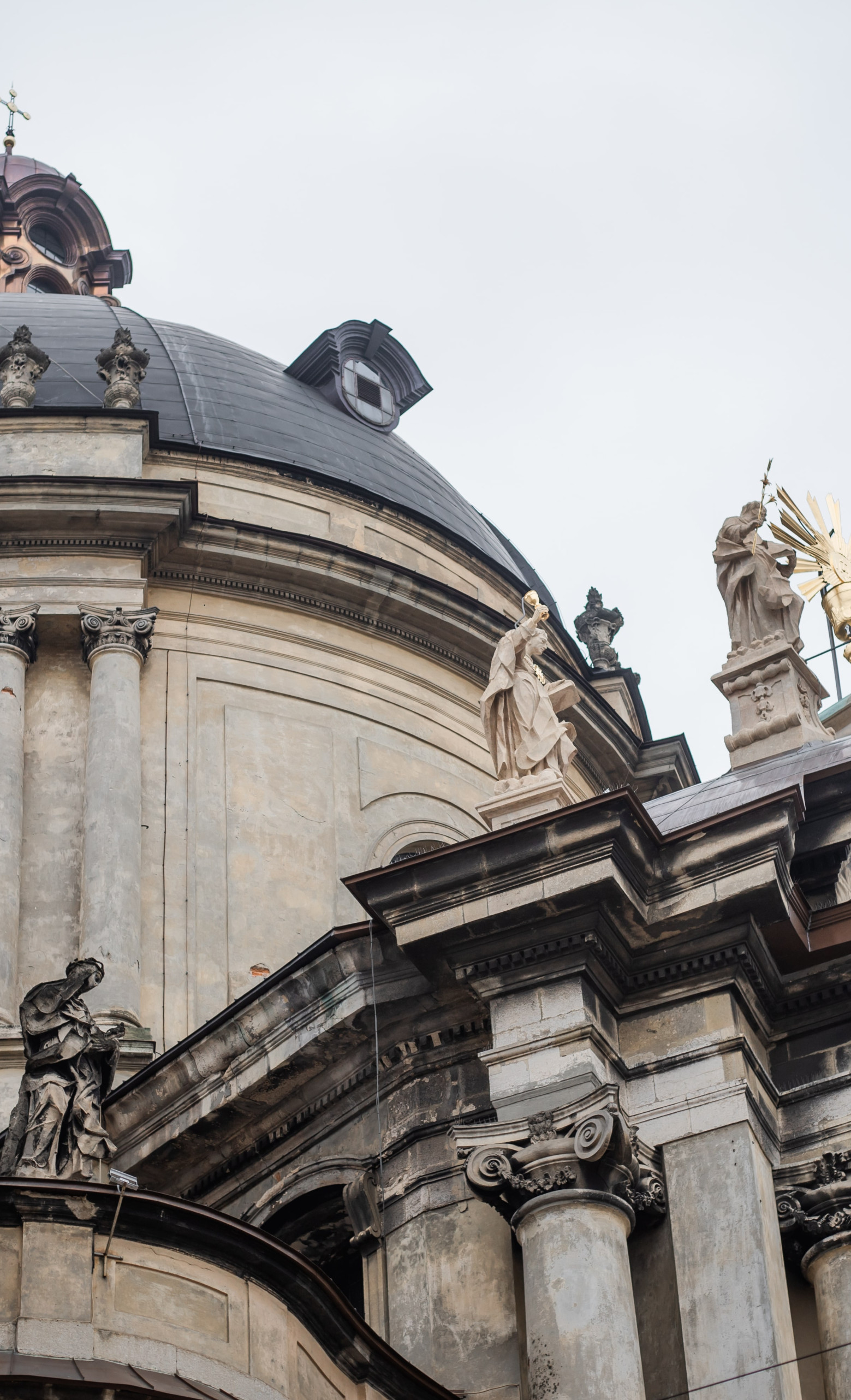Gems of Lviv
Ukraine has many beautiful and colorful cities, of course. We often look for outstanding destinations on the map and plan a trip. However, some cities attract us to come over and over again. And Lviv is exactly one of them. Every time that city hospitably opens new attractions, masterpieces of the architecture, cozy cafes, or restaurants of local Galician cuisine.
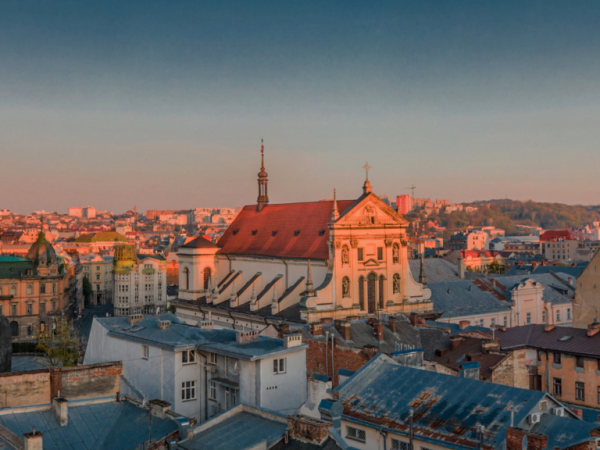
The colorful picture of the culture and mood is the result of more than 700 centuries of trading city history. The Galicia-Volyn state, the Polish-Lithuanian Commonwealth, the Habsburg Empire, the West Ukrainian People's Republic, the Second Polish-Lithuanian Commonwealth, the Third Reich, and the Soviet Union are formations of the state and their historical periods. That is why Lviv impresses with its diversity of medieval, renaissance, or baroque heritage left by representatives of different cultures. Even today, walking down the streets of the old neighborhoods, you can look through the centuries in the old gates and arches of the courtyards of Lviv townhouses.
Since you have decided to visit Lviv, take a list of must-to-see locations: Rynok Square, Potocki Palace, Opera House, St. George's Cathedral, Boim Chapel, Armenian Cathedral, and other interesting places. But you cannot get a sense of the architecture without the respective history of it. So, there is a complete list of sights in the city from lviv.travel.
Locations, streets, and squares.
Rynok Square is the epicenter of the city's heartbeat. On the main square, a modern local self-government body (Lviv City Hall) is situated as well as the most interesting townhouses.
Beautiful and colorful houses were commercial, industrial buildings and represented the shopkeepers of different nationalities a few centuries ago. The first city hall appeared in the XIV century as a result of granting the city the Magdeburg right, which meant the establishment of the city self-government as opposed to the power of the monarch.
Long-standing privileges and providing comfortable living standards in the city created conditions for trade and crafts for Germans, Ruthenians, Poles, Jews, Armenians, and even Saracens. The most reach and influential representatives of nationalities headed the City Hall. It is known that previously, Gothic and Renaissance town halls were located on Rynok Square.
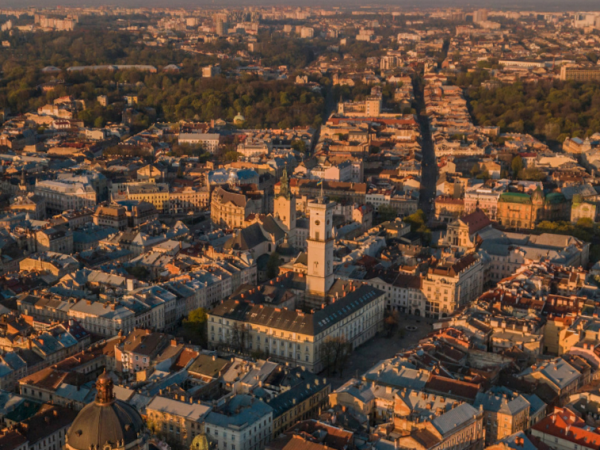
The modern building of the Lviv City Hall was built in the style of classicism in 1826 by the Austrian administration. So, now it is an interesting landmark in the center of Lviv. You can climb the City Hall tower and see the sights and beauty of the city panorama from the observation deck.
There are renaissance and baroque houses - 43 townhouses - on Rynok Square. Nowadays, they are full of buzzing restaurants or souvenir shops. Inside the house №13, which once belonged to Venetian merchants, there is the legendary pub Kryivka. If you want to get into the pub, you should knock loudly on the door and appeal “Slava Ukraїni!” which means a salute “Glory to Ukraine!” Nearby, in the Lyubomyrski Palace (house №10) the Lviv Coffee Mine is placed, where the grain of the legendary drink is extracted. There, under the ground, we recommend you to try the branded "sealed coffee" with a special sugar crust that is created with help of the soldering iron.
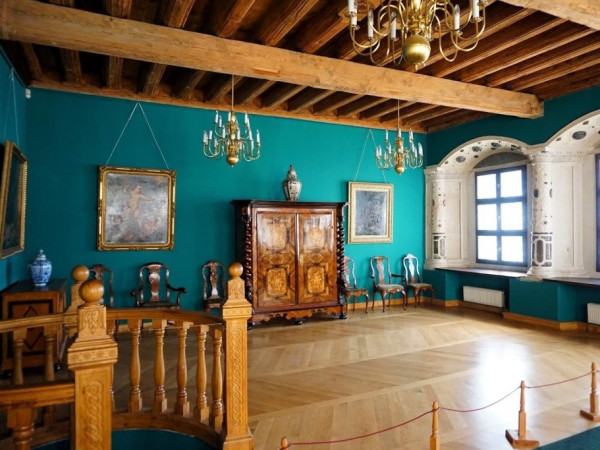
Also, there are four departments of the Lviv Historical Museum on Rynok Square
- Visitors of the city find the Black House special because of the unordinary color of the building. Today there is a "Museum of the Lviv History". Among the expositions of the department, the Lapidarium, which is based on the ground floor, is very interesting, because of the unique preserved parts of the decorations that belonged to ancient Lviv architectural landmarks.
- Rightwards, the townhouses of yellow and white colour remained Lviv Post Office during the Renaissance. Although the enterprise of the Italian merchant Roberto Bandinelli was failed because of the high price of the mail services, the house is named after him. There is a unique section of the Historical Museum with restored interiors of the XVII-XVIII centuries inside the Palazzo Bandinelli.
- Kornyakt Palace (6, Rynok Sq.) is well-known for its “Italian courtyard”. Indeed, there is a courtyard with galleries surrounded by three-storeyed arcades inside the palace that resemble classical renaissance manner. In the summertime, this courtyard is transformed into a cozy terrace of the restaurant that’s hidden from tourists’ eyes, and different expositions of the “Kornyakt Palace” department are waiting for interested visitors.
- On the opposite side of the city main square, you can visit the house №24 - "Museum of History of Ukraine" department. The museum's expositions tell about the history of Ukraine from ancient to modern times.

The Latin Cathedral is located nearby the museum department and it astonishes by its magnificence. The exterior of the city's main Catholic church has absorbed Gothic, Renaissance, and Baroque styles as it has evolved. It is known that from the XIV to the XVIII century Lviv was part of the Kingdom of Poland (since 1569 - the Commonwealth), so the Cathedral played a dominant ideological role in the architectural landscape of the city.
The interior of the Cathedral is full of the funeral chapels Renaissance decorations of the prominent and wealthy residents and the magnificent high of the Gothic vaults. We do recommend paying attention to the altar of the cathedral and the balcony for the royal families. A lot of cozy places, which perfectly suit for enjoying Lviv and a cup of coffee together with friends, are hidden under the colorful awnings on the Cathedral Square.
It is difficult to overlook the sculptural facade with the figure of Christ sitting on the dome. The Boim Chapel is the only preserved chapel on the Square near the Cathedral. The unique building tells us plots of the Scripture by its exterior and interior. The Boim Chapel family tomb creates a visual effect of space for every visitor who gets inside. There are interesting and exceptional wall portraits of the early XVII century burghers on the wall that is on the side of Halytska street.
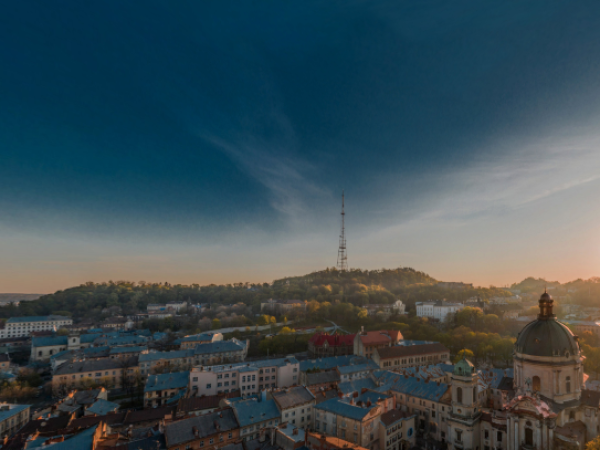
The next must-to-see location is the High Castle
During the reign of King Danylo, Prince Lev, and their followers a fortification complex was dislocated on the territory of the highest city hills, whereas medieval Lviv developed accordingly on the slopes of the modern park. Nowadays, that area has a kind of historical name - “Pidzamche”. Unfortunately, the oldest buildings made of wood have not been preserved. However, walking down the rebuilt streets, you are likely to come across churches that have preserved part of the old city decorations: Church of St. Paraskeva P’yatnytsya, the Church of our Mother of Perpetual Help, the Church of St. Nicholas, and others.
If you want to visit the High Castle, you should move from Gunpowder Tower towards Maksyma Kryvonisa St. and climb up from the bus parking. Further, take the road on the left to approach the start of the route (metal stairs) and go up. It is worth noting that the castle was also not preserved except for a small defensive wall, which you will find on the described route. Interestingly, the high hill with a paved road was created artificially by the Polish representatives of Lviv in 1856 in honor of the 300th anniversary of the Lublin Union adoption. Here on the hill, you will catch a unique view of the city center and neighborhoods, industrial or inhabited ones. Take a stroll around the High Castle park, you will see lots of peculiar things.
Art galleries and museums
The next stage of the immersion into the atmosphere of Lviv, under the blanket of cultural features, local mood, and impressive stories, will be acquaintance with museums and galleries of the city.
Potocki Palace, Pharmacy Museum, "Shevchenkivskyi Hai", Lychakiv cemetery, Svobody Avenue, and many other unique places are ready to tell you about Lviv.
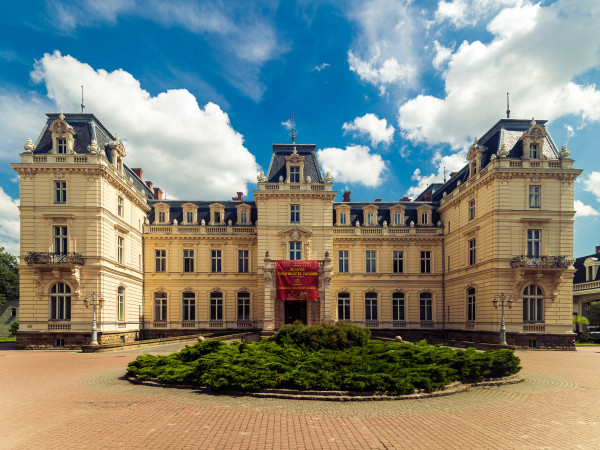
Potocki Palace
The Potocki Palace is located in the city center on Kopernyka Street (the side street of Svobody Avenue). The building, erected in the late nineteenth century, resembles the French architectural style. Contrary to the plans of nobleman Potocki, the building wasn’t used as intended by any member of the famous Polish family. Today the building serves as one of the most famous departments of the Lviv Art Gallery "Potocki Palace". The expositions include permanent and temporary exhibitions of Ukrainian and foreign sculpture and painting of different epochs. Be sure to visit the backyard of the palace, there are interesting miniatures of castles in Lviv and its region.
Lviv Gallery is located in many departments. There are other interesting places near the Potocki Palace, such as the Museum of Modernism, the Lozinski Palace, and the Memorial Museum-workshop of Teodozia Bryzh.
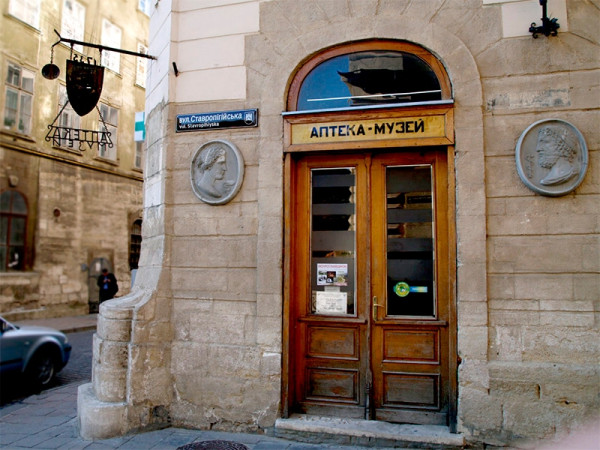
Pharmacy Museum
A particularly popular location among guests of the city is the Pharmacy Museum. The point of sale of pharmaceutical products was developing here from the beginning of the XVIII century and was recognized as a pharmacy "Under the Black Eagle" because of a sign at the main entrance. Curiously, the collection of vessels and inventory was preserved and even enriched with the help of other pharmacies in the city during the Soviet period.
The museum “Under the Black Eagle” is located next to the Palazzo Bandinelli, on the corner of Drukarska and Stavropihiyska streets. The Pharmacy Museum consists of several halls with different exhibits: containers for the preparation of powdered drugs, suppositories, devices for creating pills, dryers, stamping machines, and many other uncommon things. By the way, the route through the halls includes an ancient underground tunnel, which the masters of pharmacy used to store products in a cold room. However, there are many secrets there and they can be revealed only by visiting the legendary museum “Under the black eagle”.
There are peculiar cultural spaces that are situated not far away from the city center. It is possible to get there by moving from the central stop "Rynok Square" on the tram №2 in the direction of Lychakivska Street and get off at the stop on Mechnykova Street. If there is sunny weather, you can choose the other option and go there on foot.
The area between Lychakivska and Pekarska streets will be a wonderful discovery of another Lviv, where courtyards are hidden, and different family villas and palaces of the late nineteenth century are located next to them. Let’s speak about these two destinations in our city guide.
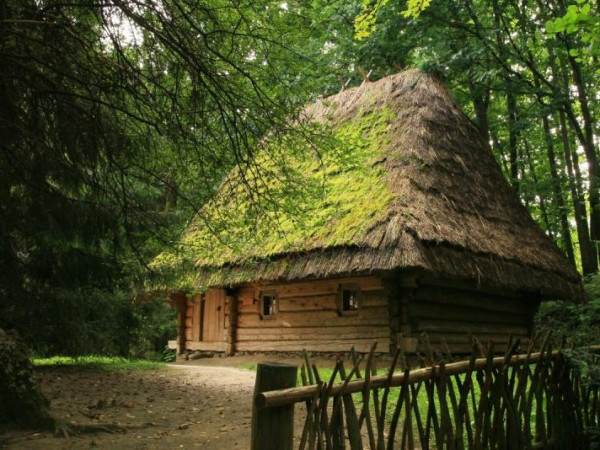
The Museum of Folk Architecture
The Museum of Folk Architecture exists in different cities of Ukraine, and each of them is special. Lviv Open-Air Museum represents the monuments of folk architecture which refer to different ethnographic regions of the country: Boykivshchyna, Lemkivshchyna, Hutsulshchyna, and others. Once in Shevchenkivskyi Hai, the visitor will find not only residential buildings of the XVIII-XX centuries with the interior of that time with preserved authentic household items, but also churches and workshops that were brought here from different parts of Ukraine. Shevchenkivskyi Hai has quite a large territory with tangled trails, but do not be afraid of getting lost and keep in mind the division into sectors according to the region.
There is an additional reason for visiting this place: many festivals, such as “Easter Haivka”, “Fairy Tale in the Hai”, “the Feast of Bread”, which take place here every year.
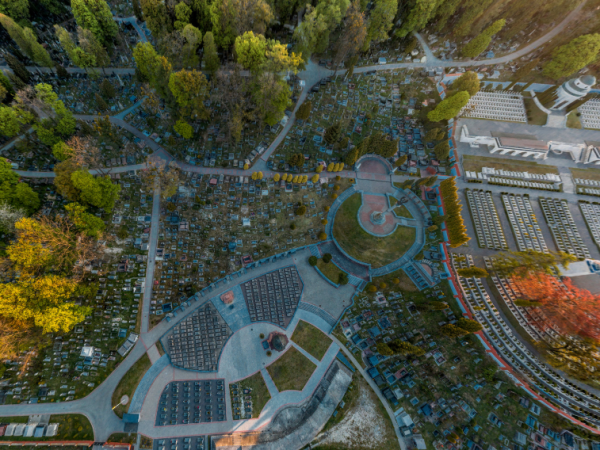
Lychakiv Cemetery
On the opposite side of Lychakivska Street, there is a cemetery that is known for the prominent personalities who are buried there. Its origins date back to the beginning of Austrian governing of the city in the late XVIII century. People desired to prevent the spread of future epidemics due to a large number of church cemeteries inside the Old Town. That’s why the idea of Lychakiv cemetery came up. After the implementation of this idea, the subsequent burials of Lviv wealthy citizens were carried out there. The cemetery is known not only for its figures but also for its beautiful sculptures and tombstones created by local, Austrian and Italian masters.
The main alley stretches from the entrance, next to which there are chapels and graves, which will surprise you with the biography of their owners: Krzeszunowicz, Kiselki, Moledzinski, Adamski, and the famous Bachevski. There is the Field of Honorary Burials to the right of the entrance. It was created during the years of independence. On the Field, the heroes of the Heavenly Hundred and heroes of the battles in the East in the war against Russian aggression are buried.
Moving along the alley, a visitor gets to the grave of Ivan Franko. It depicts a sculptural composition “stonemason”- the embodiment of the writer’s famous work. In particular, the visitor can find the burials of V. Barvinskyi, S. Lyudkevych, A. Kos-Anatolskyi, Solomiya Krushelnytska, Markiyan Shashkevych, and many other outstanding people whose activities you know for sure. At the end of the main alley, there is the Memorial of the Ukrainian Galician Army, Polish Military Burials (Eagles Cemetery), burials of battle participants in the east since 2013th.
Lychakiv Cemetery hides many stories of lives and activities of extraordinary people. The paths of the vast area pass by the engraved epitaphs in several dozen languages of different nationalities. This is a special place that surprises with the beauty of peace, reflected in memories and stones. If there is a desire to find out what and who developed the city, the Lychakiv cemetery will become a special attraction during your visit to Lviv.
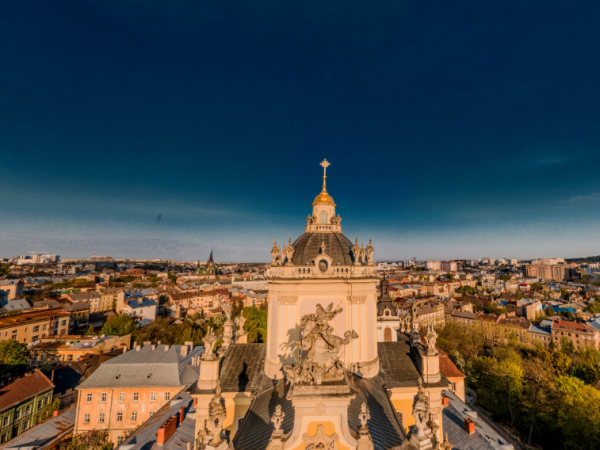
Strolling around Lviv, visitors can easily get the impression that this is a city of churches. In total, there are more than 100 temples of diverse denominations. If you travel to Lviv by train, the high neo-Gothic spires of the church of saints Olga and Elizabeth will be the main focus of the opening landscape. At first glance, this is a high medieval building, but the church was built only in the early twentieth century. There is an observation deck on one of the towers, where willing tourists and residents of the city have an opportunity to climb up and see the beauty of the roofs and horizons of the city of Leo from a new location.
Nearby, on St. George's Hill, you can see the baroque decorations of the eponymous St. George's Cathedral, which is the main church for Greek Catholics of the city. The Metropolitan Palace and Gardens will be a discovery for a second visit or a pleasant surprise if you are here for the first time. In the interior of the church, you can find a unique copy of the Shroud of Turin, a Terebovlya miraculous icon, as well as go to the crypt with the burials of Andrei Sheptytsky and Joseph the Blind. Don’t forget to pay attention to the main sculptural composition that adorns the Cathedral of St. George, and is dedicated to the patron of the church and the city - St. George the Serpent. Lviv has a lot of sights on its map that can surprise tourists. And we are convinced that if you visit the city of Leo, you will come back to it again.
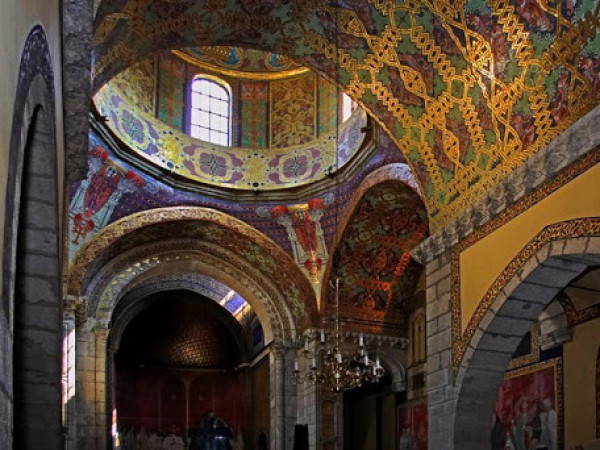
On Virmenska Street, on the right side of the buildings, there is a passage between the townhouses, which tourists often pass by. Many dwellers know about the existence of a mysterious courtyard, but not everyone is lucky enough to find it while walking. There is the Armenian Cathedral in front of you that surprises you with its architectural peculiarities. The monument has been preserved in the same form since the princely times. We strongly recommend visiting the Armenian Cathedral, where you can go through the entrance from the side of Krakiwska Street, and see the beautiful mosaics and frescoes.
The works of the artist, Jan Henrik Rosen, are located on the walls of the church and will seem impossible concerning the usual images of Christian shrines. Try to find the symbolism on the images of the original artist.
Nowadays, a lot of different galleries open their doors to visitors on Virmenska Street, where works and exhibitions of Lviv contemporary artists are presented. We recommend visiting the IconArt, Dzyga, or Green Sofa galleries.
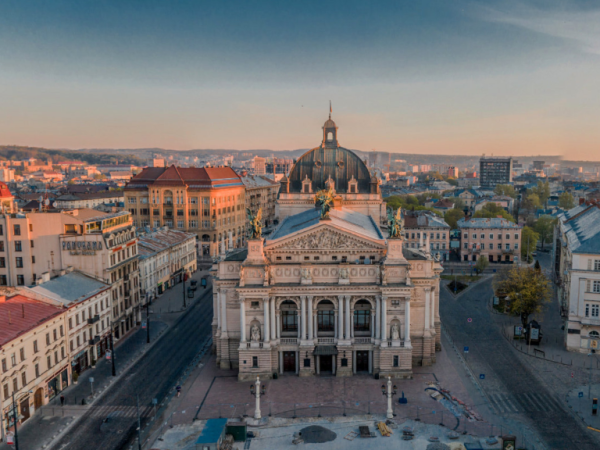
The Opera and Ballet Theater is an invariable symbol of the city and one of the first associations connected with Lviv. An additional reason for visiting the area in front of the academic theater is the opening of a new square in late 2020. A visit to the Lviv Theatre of Opera and Ballet named after Solomiya Krushelnytska is always a good idea to spend an evening in Lviv.
We have described the most famous sights of Lviv, the photos of which will remind you of the unique old city atmosphere. We advise you to visit the Tourist Information Center at 1, Rynok Square for detailed information about events in the city. If you want to travel comfortably around the city - buy an official city tourist card Lviv City Card and visit a sightseeing tour and more than 15 museums for free.
